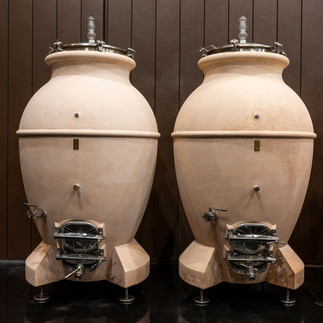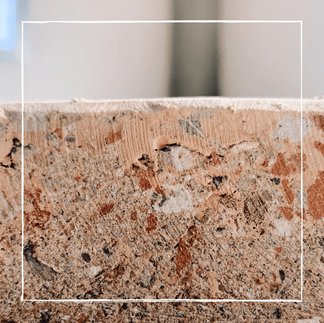Drunk Turtle - Supplier Spotlight
- bouchardcooperages
- Oct 2, 2024
- 2 min read
Pontadera, Tuscany – Italy
History
Drunk Turtle is a family-owned company led by the Brini family and located in Pontedera, Tuscany, Italy. The company was founded in 2014 by a group of wine industry professionals, architects, and engineers who repurposed an ancient Roman concrete recipe: "Cocciopesto" for building wine fermentation and maturation vessels called Opus. The name Drunk Turtle is derived from Italy's Slow food movement, the extremely hard shell of a turtle and the love for wine.
Today
The Brini family are now the sole owners of the company and are also involved in the wine industry with their family winery: Il Conventino, located in Montepulciano, Italy, and their Tuscan gin brand: Ginepraio. Through years of research and development with the University of Pisa, Drunk Turtle has perfected their Cocciopesto recipe and currently produces more than 200 Opus a year which are sold predominantly in France, Italy, and other important winemaking countries.
Material - Cocciopesto
Cocciopesto is an ancient Roman building material used in the creation of the Roman Empire's aqua ducts. The material is a mix of stone, gravel, clay, terracotta, sand and marl (soft marble) brought together with a binding material that includes a small amount of cement (hence a preparation treatment with tartaric acid is needed). Consequently, Cocciopesto has a porosity similar to concrete, so about half of that of a barrel.
Production
The current offering of Drunk Turtle Cocciopesto Opus for the export market includes 500L, 1000L, and 1,500L Opus. The Opus is made in single-cast molds that are filled with precise mixed ratios of the Cocciopesto aggregate and then left to sit for over two months to dry and harden. Accessories are added before and after and all Opus see a rigid water testing protocol for any leaking.
Accessories
All Opus are equipped with standard accessories that include a tasting tap, external hatch door, 2-inch TC racking valve, 2-inch TC partial discharge valve, and forklift-friendly adjustable feet. Cooling flags, glass bungs, (known as a Colmatore), external logos, or paintings can be included upon request. Before using, please follow the included protocol for the preparation of your Opus with a light tartaric acid treatment that should be repeated every year before harvest.
Winemaking & Styles of Wines
The Opus's different sizes and winemaker-friendly accessories make the vessel extremely versatile.
White wine fermentation and aging: The Opus egg shape allows for the constant stirring of lees pre and post-fermentation, contributing texture on the palate.
Red wine fermentation and aging: The thick walls of the Opus (3 inches), Cocciopesto's thermal inertia characteristics, and the vessel's external door make it winemaker-friendly for both fermenting and aging red wines.
Component in the final blend: The Opus can be used as a blending vessel along with your barrels and stainless steel tanks in the wine's final blend.
Special cuvée or vineyard designate: The Opus can also be used for a singular bottling to highlight a unique varietal, vineyard, or site.




































































Comments